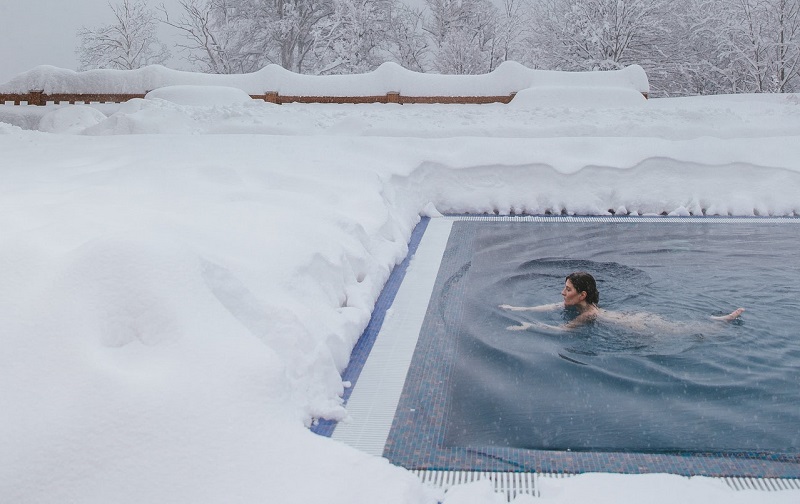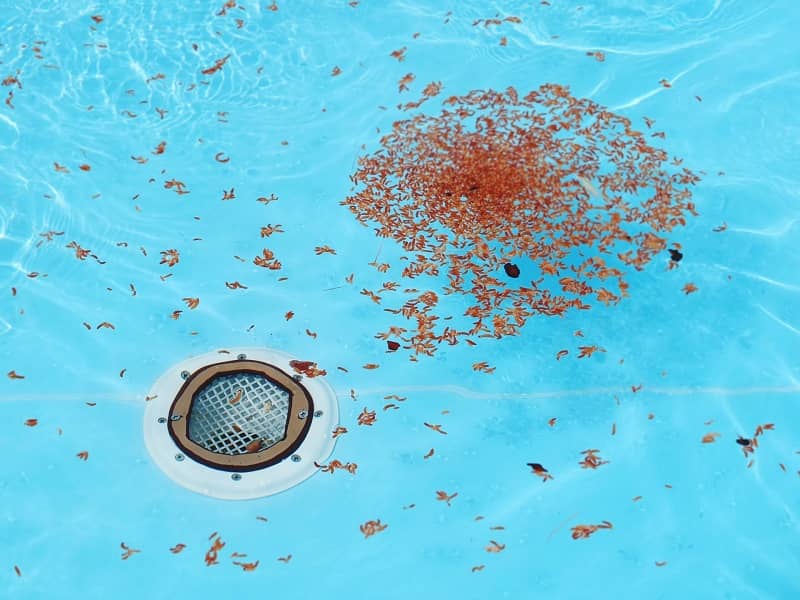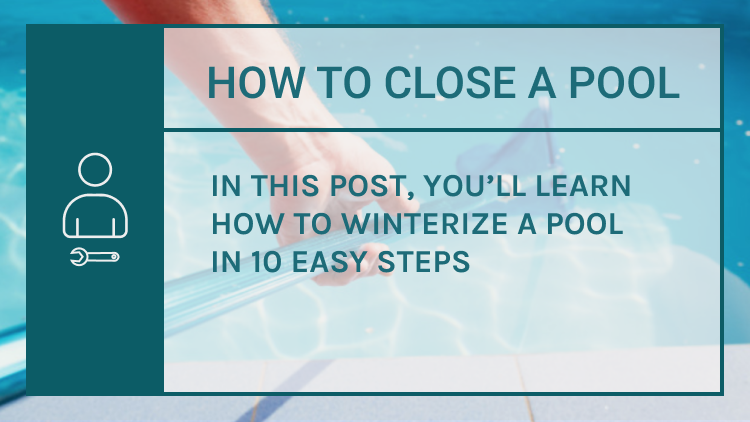Winterizing, or closing your pool, is necessary if you live in a climate that sees temperatures below freezing for any length of time. If that’s your case, you must learn how to winterize a pool to prevent any possible damage. In this post, you’ll learn how to winterize a pool in 10 easy steps.


Why Winterize Your Pool
Water expands when frozen and can result in costly repairs to your pool plumbing and equipment unless you winterize prior to freezing weather.
Most newer pumps and/or pool control systems have freeze protection functions that automatically cycle the pump(s) on and off periodically.
If you do not live in a climate where the temperature gets below freezing and stays for several days at a time, there may be no need to winterize your pool and you should simply make sure that water circulates periodically when the temperature is below freezing.
Check to make sure freeze protection is configured prior just to be safe. If you do not have a system that has freeze protection, run the pump while the temperatures are below freezing.
Pro Tip: For periodic dips below freezing, make sure that water circulates periodically when the temperature is below freezing. Check to make sure freeze protection on your pumps is configured prior just to be safe
How To Winterize a Pool
Each pool set up is different and winterizing can be different depending on factors such as whether or not you have a heater, how long your temperatures remain below freezing, or whether or not you have water features that need to be winterized.
In the end, the principles of winterization are the same, thoroughly clean your pool and balance your water to prevent staining or other unwanted effects, shock to remove any existing contaminants to prevent unsafe or green water, and remove water from your pipes and equipment to prevent damage.
Sutro can help you balance and test your pool water at all times, keeping you informed 24/7 about your pool maintenance tasks.
Professional pool companies offer winterization services or you can winterize your pool yourself. As with any pool maintenance, if you are not skilled or comfortable with an activity it is always best to call a professional so that you don’t damage your pool.
If you are going to winterize your pool yourself, there are several useful videos that explain how to prepare and winterize your pool and your equipment that can be of use.
How to close a pool for winter – 10 steps to winterize your pool


- Balance your water chemistry in the days leading up to closing your pool and get it stable.
- Thoroughly clean your pool. This includes brushing and vacuuming, cleaning skimmer baskets, and any water features you may have.
- Shock your pool to make sure that you kill all contaminants that may linger around and surprise you when you reopen. You may want to use an algaecide to prevent algae growth; consider when you would want to open your pool again as algae do not typically grow when the water is below 60 degrees.
- Remove your skimmer baskets, return jets, and other wall fittings. Also, remove your ladder and/or steps if they are removable so that they do not interfere with the placement of your cover.
- Lower your pool water a few inches below your skimmer. For pools with the main drain, you can close the skimmer suction valve if you have one and force water to come through the main drain so that you can get the level below your skimmer.
- Once you are finished using your pump, it is important to disable any timers that could be accidentally started and also turn off the pump breaker(s) in order to prevent potential damage to your equipment while the pool is closed.
- Drain your pumps, filters, and any other equipment that may hold water. Do the same for your pool robots or any other maintenance items or toys that could hold water over the winter. It’s best to store them where they will be protected from the elements.
- Using a shop vac or air compressor, blow water from your returns and skimmer pipes and fill skimmer pipes with pool antifreeze (IMPORTANT – DO NOT use automobile antifreeze, use only antifreeze compatible with recreational water).
- Plug returns and other open pipes with rubber plugs after partially filling with antifreeze to prevent water from entering again or antifreeze leaking from unsealed ends. Remember to do the same to your water feature drains, they can fill with water and freeze if not plugged the same as the other pipes.
- Lastly, cover your pool and secure the pool cover. You should also consider a pump for the center of the cover to keep the water from puddling and freezing, and/or a floating device under the cover to prevent the ice from expanding and damaging your liner.
Safety Information About Winterizing Your Pool
- Do not perform any activities that you do not have experience with or are not comfortable doing. Pool plumbing and electrical equipment can be dangerous if not maintained appropriately.
- Gas heaters require special attention when winterizing and if done improperly can be ineffective or dangerous. Consult a professional if you have a gas heater to make sure it’s properly taken care of.
- Do not store extra pool chemicals indoors over the winter. Read manufacturer labels to understand proper storage techniques and shelf life. Pool chemicals can outgas and create hazardous conditions inside inclosed spaces.
So there you have it, how to close a pool for the winter. And when it’s time to open the pool again Sutro has you covered! Our smart water monitor will test your water and tell you exactly what to add and how much to add based on your favorite chemicals.
If this is your first time closing your pool, take a look at our pool closing tips and tricks blog frequently asked questions and useful tips for closing your pool.

